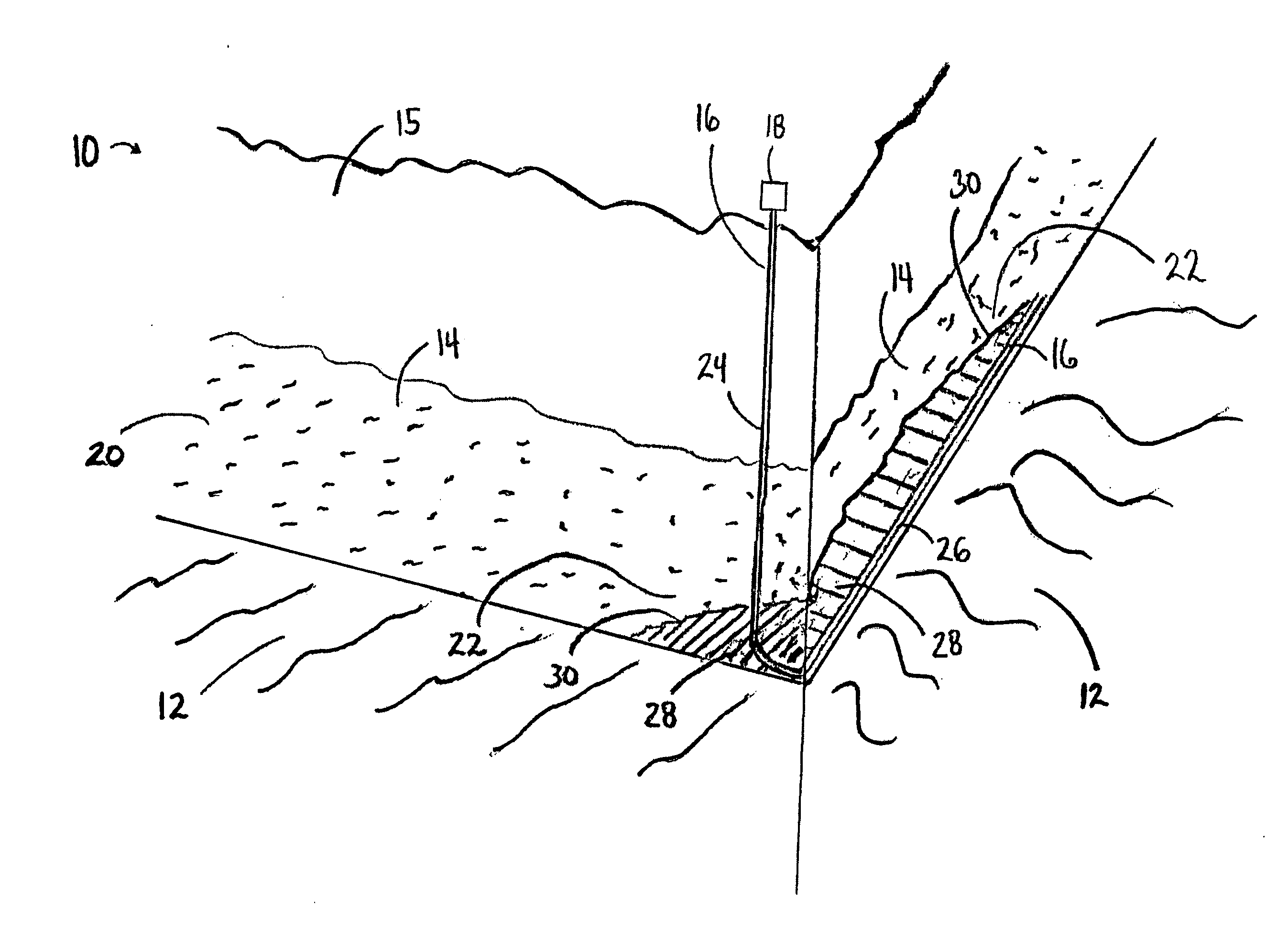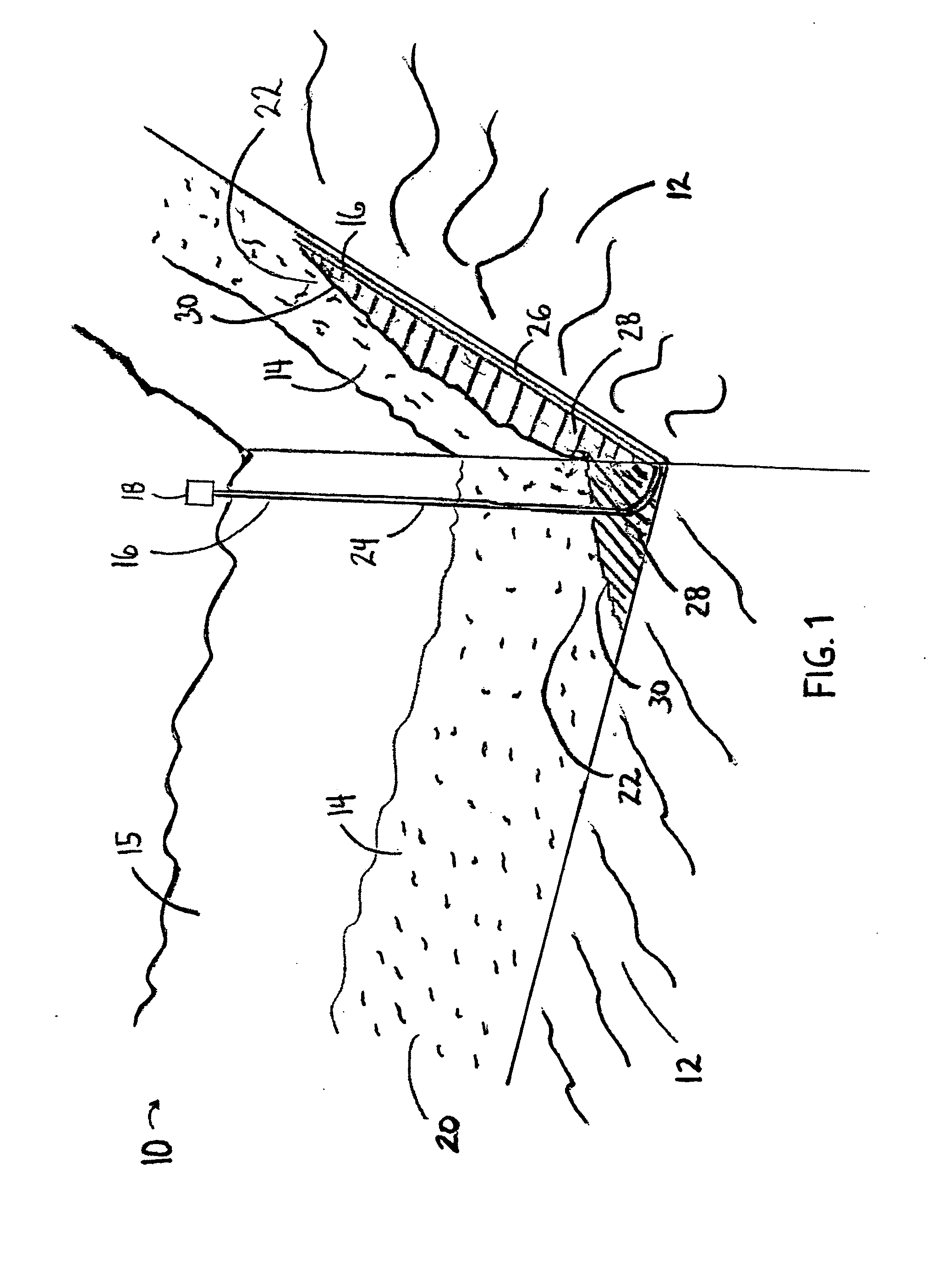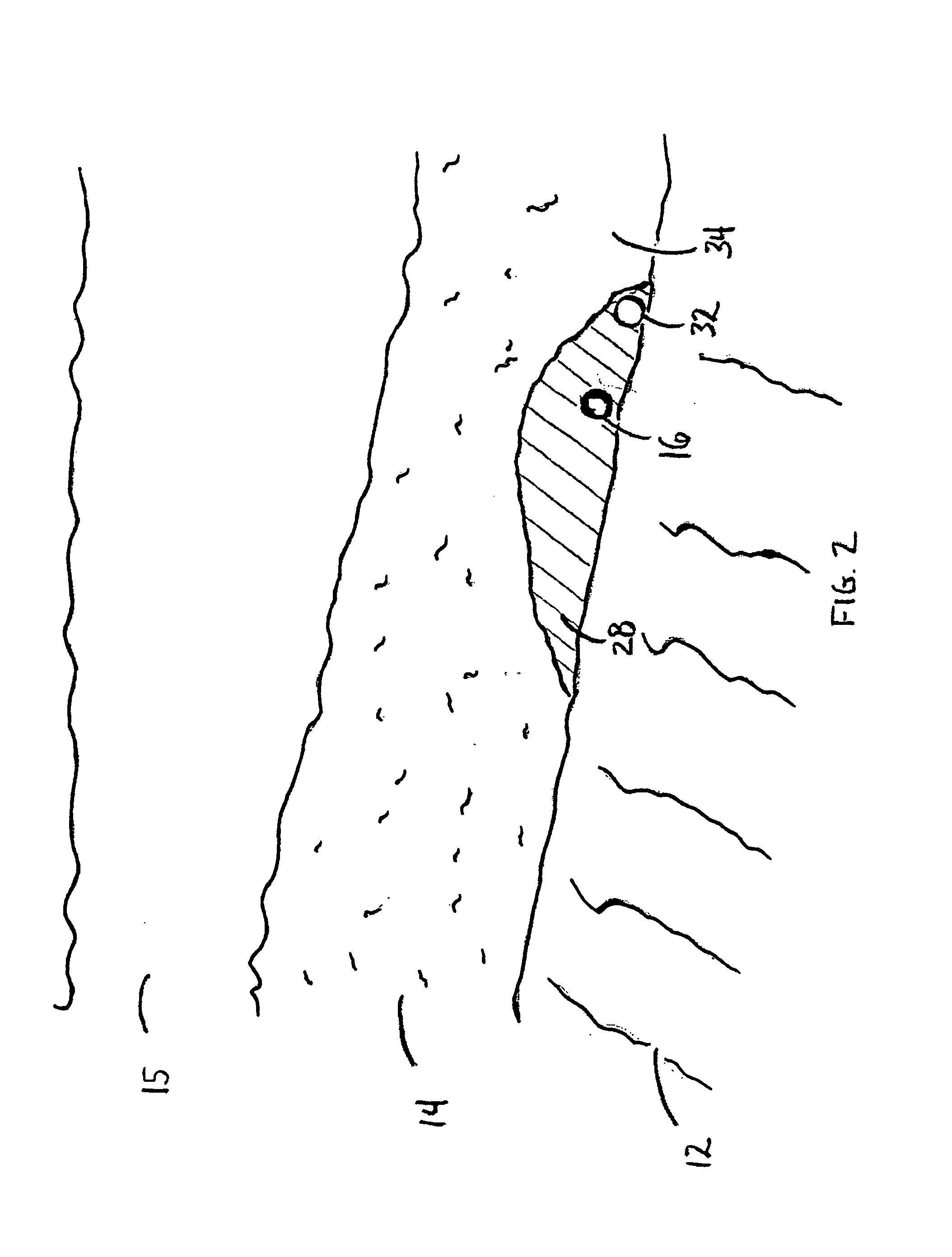Reducing the energy requirements for the production of heavy oil
a technology of energy requirements and heavy oil, applied in the direction of fluid removal, insulation, borehole/well accessories, etc., can solve the disadvantages of high oxidant reactivity of pure oxygen, and achieve the effects of reducing the viscosity of crude oil, improving sweep efficiency, and promoting oil upgrading
- Summary
- Abstract
- Description
- Claims
- Application Information
AI Technical Summary
Benefits of technology
Problems solved by technology
Method used
Image
Examples
Embodiment Construction
[0029]With reference to catalytic combustion system 10 of FIG. 1, low permeability layer 12 underlays oil-bearing sand deposit 14. Sand deposit 14 underlays overburden layer 15 which consists of shale, rock, permafrost, or the like. Sand deposit 14 defines an upslope region 20 and a downslope region 22. Well 16 extends downward from wellhead 18 on the surface. Prior to passing into low permeability layer 12, well 16 turns and extends horizontally above layer 12 along downslope region 22 of sand deposit 14.
[0030]A suitable combustor (not shown) may be placed in either the vertical portion 24 or horizontal portion 26 of well 16. Hot fluid is injected into downslope region 22 of sand deposit 14 through the horizontal portion 26 of well 16 thereby forming hot fluid chest 28. Mobilized oil drains downslope from interface region 30 of hot fluid chest 28 and sand deposit 14. The mobilized oil collects around well 16 and is contained upslope by low permeability layer 12 and downslope by col...
PUM
 Login to View More
Login to View More Abstract
Description
Claims
Application Information
 Login to View More
Login to View More - R&D
- Intellectual Property
- Life Sciences
- Materials
- Tech Scout
- Unparalleled Data Quality
- Higher Quality Content
- 60% Fewer Hallucinations
Browse by: Latest US Patents, China's latest patents, Technical Efficacy Thesaurus, Application Domain, Technology Topic, Popular Technical Reports.
© 2025 PatSnap. All rights reserved.Legal|Privacy policy|Modern Slavery Act Transparency Statement|Sitemap|About US| Contact US: help@patsnap.com



